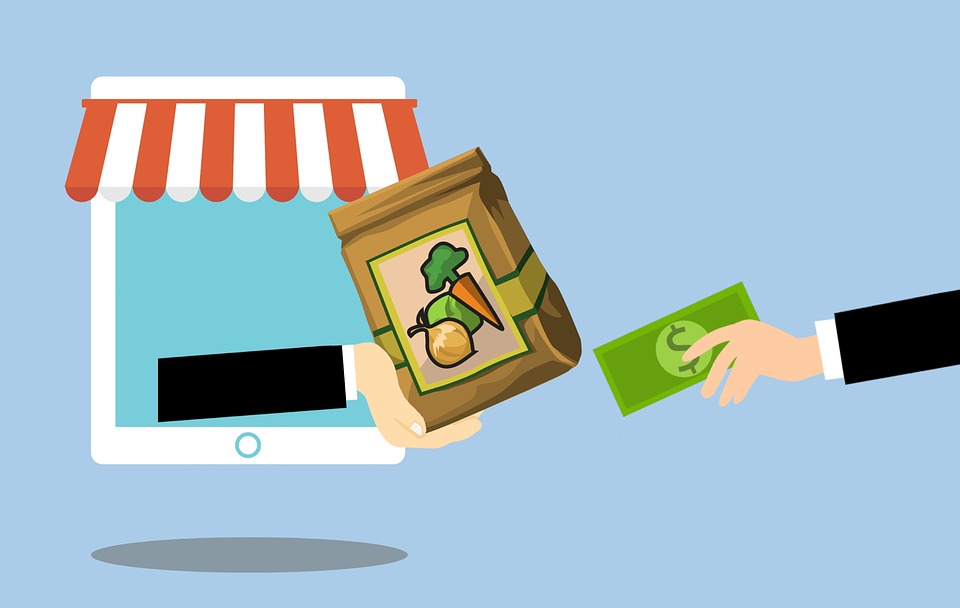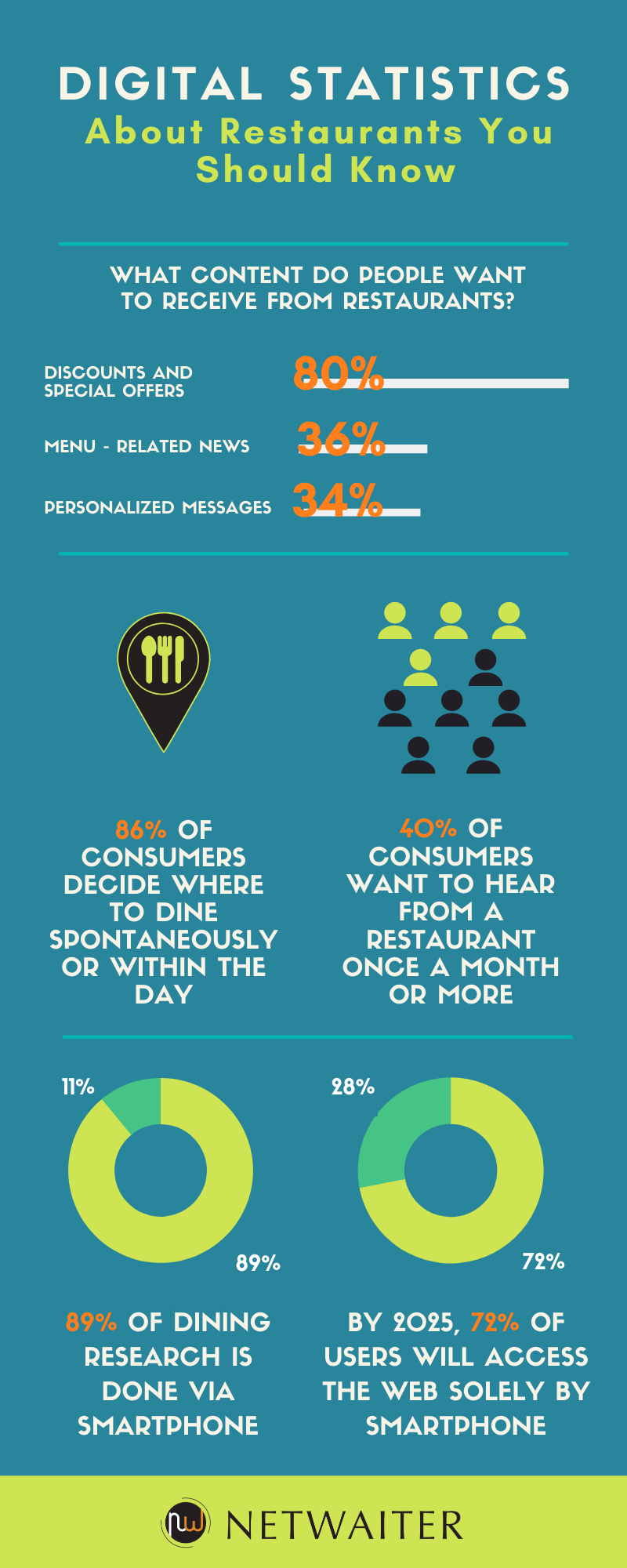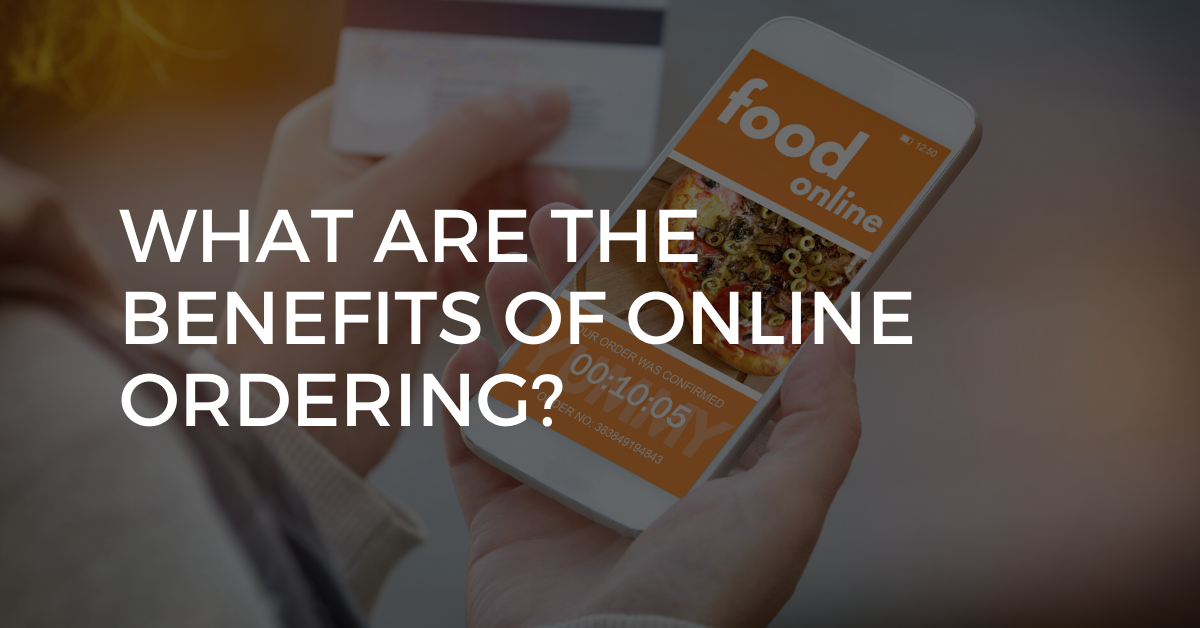For over ten years, online ordering has been one of the leading drivers of growth in the restaurant industry.
Tech savvy restaurants understand the online food ordering system and its potential to drive more customer engagement and yield reliable growth.
Customers, using their computer or smartphone, access a restaurant’s menu online, make their selections, and place an order. By the time a customer arrives at the restaurant, their food is packaged and ready for pickup.
In more recent years, the increased use of mobile devices has significantly benefited restaurants as more customers embrace the ability to place orders on the go.
The growing popularity of online food ordering is boosted by some very obvious benefits for both restaurants and customers.
Customers demand the convenience of being able to order food online. According to the National Restaurant Association, more than 63% of restaurant customers have used technology to interact with a restaurant. This includes reviewing a menu, checking nutritional information, and placing an order.
These figures will continue to rise. As noted in an article released by NetWaiter, “52% of customers said they would use a smartphone or tablet for delivery or takeout if the restaurant offered that option.” Over 50% of your customers would likely increase the frequency of ordering if they could order online.
ONLINE ORDERING IS THE GATEWAY TO CONVENIENCE
Numerous surveys reveal that customers prefer the convenience of online ordering. The ability to order remotely eliminates the pain of waiting. Customers also enjoy not feeling rushed while ordering.
ONLINE ORDERING MEANS LARGER TICKETS
Not only does online ordering allow customers to place orders at their own pace and as a result, they end up spending more. Orders end up being 15% to 20% more lucrative than in-house orders.
ONLINE ORDERING INCREASES EFFICIENCY
Online ordering creates tremendous efficiencies for a restaurant.
With a sizeable chunk of takeout and delivery orders processed online, restaurants no longer have to pull an employee away from other duties to answer the phone and take orders.
When a customer wants delivery, they are paying for both food and convenience. If you don’t have online ordering, a customer is required to call the restaurant. To call the restaurant, the customer has to know ahead of time what they want to order along with the restaurant’s location and phone number. The process is time-consuming, and if the restaurant also does not have a website, the customer will look elsewhere.
ONLINE ORDERING INCREASES OPERATIONAL EFFICIENCY
Implementing online ordering can improve a restaurant’s operational efficiency. Instead of receiving orders via telephone, restaurants can receive 2x-10x as many orders within the same amount of time. The process is cleaner and more organized. Also, customers are no longer calling in and monopolizing an employee’s time with questions and deliberations, so your staff is freed up to engage in higher priority items.
 MOBILE RESTAURANT
MOBILE RESTAURANT
Online ordering makes it possible for customers to place orders with the click of a button. Now that most online ordering services have an app or other mobile capabilities, customers can choose what they want, and order, within the palm of their hand.
Christina Coy, Vice President of Marketing, Pie Five Pizza wrote: “Fast and easy is the winning combination for the future. Several years ago, we updated our website to be mobile-friendly, and we launched our app last year to make ordering easy as pie. We knew the trend was moving toward mobile, and we wanted to be ready. We’re seeing a steady shift to mobile ordering. More than 65% of our online orders now come through mobile. Most importantly, guests who use our mobile-ordering option love it. Guests can also save their favorite order, so we see a lot of repeats.”
“Technology can always be a challenge with a glitch in the system or an integration not working properly. Random issues do pop up, but all of them are fixable. The ease of use and convenience are the biggest benefits. You don’t have to worry about a complicated ordering process anymore.”
 UP-SELLING OPPORTUNITIES
UP-SELLING OPPORTUNITIES
Sales and total orders sizes are higher online than in-store because a restaurant has more opportunities to up-sell and cross-sell their items. The ease of ordering online creates a good buying experience without rushing customers through the ordering process. Pizza Sales reports that the average online pizza order is 18% higher than orders by phone. Restaurants using online-ordering were able to grow their takeout revenue by an average of 30%. In fact, one in five doubled their takeout revenue.
We’ve all been there. Do we want to spend that extra $1.80 on guacamole? (A: Hells yes! We’re not going to let $1.80 stand in the way of some sweet, sweet holy guacamole!) Do we want a drink? Do you want any appetizers? These types of questions are all part of the decision-making process when it comes to ordering food at a restaurant. The art of cross-selling and up-selling has been around for decades because it’s a very effective way to boost sales for a restaurant.
Why Up-Selling is Key
When you up-sell, you open the door for opportunity to increase your order size and overall profits. You are also giving customers options they might not have been considering prior to placing their order. A Fortune restaurant technology survey found, “The percentage of orders booked online or using a smartphone or tablet app – now 6.6% of the total – exceeded the quantity placed verbally over the telephone (5%).” Customers, when ordering from their smartphones and tablets, are presented with more options and subconsciously order more. The convenience of getting online to place an order is very appealing to customers, and the process behind making that buying decision has never been easier.
As you plan your up-selling strategies, make sure you continue to keep customers’ preferences and choices in mind. Choose items that are complementary in flavor and complete a “whole meal. Avoid add-ons that wouldn’t go well with their original choice. Remember to keep it simple and direct.
Menu Engineering
A well-engineered menu can increase a restaurant’s profits by 10% to 15% on an ongoing basis. Additionally, restaurants with online ordering are working towards building a base of customers who are used to “immediate gratification” – or in this instance – ordering their food faster. Keep the add-ons short and sweet and consistent with that particular menu item. Using data and sales feedback, you should continually improve your restaurant’s online menu.
To make up-selling and customizing easier, restaurants owners can customize the ordering experience by building add-ons directly into their online restaurant menu. For example, your restaurant might have four ways to prepare a burger (Well Done, Medium-Well, Medium, Rare). This specification can be integrated into your menu so a customer can pick and choose their options via a simple checkbox, rather than forcing a user to type it out.
Up-Sell With Add-Ons
But what if the customer wants an extra burger patty? Additional cheese? According to a study from PlateIQ, customers can pay up to a 636% premium for any extra add-ons or ingredients in a restaurant meal and shows that restaurants can mark up ingredients by 300% on average. Using an online platform that gives you full control allows you to make changes on a whim to turn a $6.50 order into a $9.25 order.
Setting a delivery and/or takeout minimum is another advantage to online ordering. You can determine how much an order needs to be to make it cost-effective for your business. A customer might want to order delivery for dinner, but to make it worthwhile, they have to spend at least $10. Setting this minimum requirement encourages them to order another entree, and/or add extra items to their order to hit that minimum delivery amount.
CHOOSING A PLATFORM
Consider the restaurant online ordering software you want to use and how the customer will experience your menu in a digital ordering process. In theory, the ordering experience could end once a customer makes their main entree decision. A good system, however, should suggest items to pair with a customer’s existing choices. Consider setting appetizers, desserts, and drinks at the top of your “add-on” list since they are the most overlooked. Other categories to consider would be ones with high profit margins and categories with reasonably low price points.
CUSTOMER INFORMATION
Capturing valuable information about your customers helps you improve your processes and menu in the future. Using a service that has built-in reporting features can help improve customer retention and growth. The service you choose should allow you to collect information about your customers and their ordering history. This information can help you identify trends, learn more about your customers, and plan restaurant marketing campaigns and promotions for your restaurant. This type of data is critical for customer growth. Having a system that incorporates data and marketing components, will give you the optimum chance to grow your online business. Having a fully-integrated platform that includes email marketing, social media, loyalty programs, promotional system, mobile marketing, will help you stay engaged with your customers.
“To be competitive in the off-premise market — going up against other restaurants and other food-service providers like supermarkets, operators need to address who they are targeting and how,” said Melissa Wilson, principal with Technomic. “A lot of brands need to re-evaluate who their heavy users are.”
Not all systems provide the components listed above. As a restaurant owner, you know the value of your brand and what works best for your team. Choose a system that’s easy to use. The easier the process, the more positive the experience.
CONCLUSION
Online ordering can consistently draw loyal, valuable, and new customers to your restaurant. Restaurant delivery alone is expected to produce $75.9 billion in gross sales by 2022. Convenience and ease are the driving forces behind its growth. This expanding market will continue to offer new opportunities to restaurants that can leverage online ordering the best ways possible.

